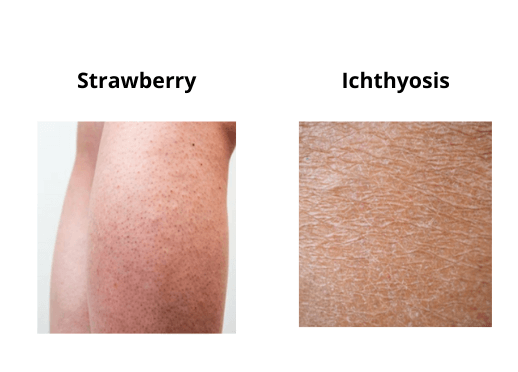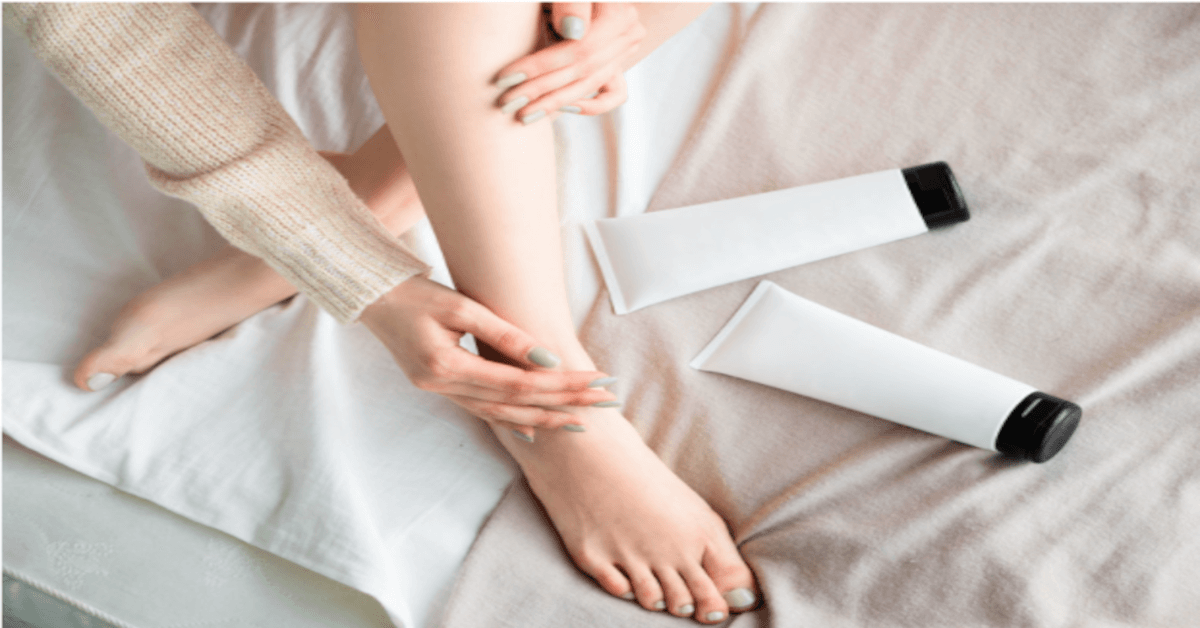![]()
People with discolored, swollen or otherwise unsightly legs often experience embarrassment in public because they are self-conscious. In addition to self-consciousness, these people may also have pain in their legs that causes them to hide them away. However, while the appearance of the legs can be distracting, the problem is often more severe than it seems. The following are some tips for those with “ugly legs” to cope with the condition. There are two severe bad skin for skin. They are strawberry and ichthyosis. Now I am going to evalute them with solution.

Ichthyosis solution-
If you’re suffering from the symptoms of ichthyosis in the legs, you might be looking for a solution to your condition. The problem is a combination of dryness and scaling of the skin. It’s typically worse in the winter and more noticeable on the legs, as the skin is not allowed to sweat properly. You’ll need a treatment to ease the symptoms and reduce skin itchiness and cracks.
There’s no ichthyosis of ugly legs solution that will eliminate the symptoms, but you can reduce the likelihood of skin irritation by using a mild laundry soap and moisturizer. If the affected area is in an area that’s especially dry, a humidifier can help keep the skin moist. And the best solution to itchiness is to visit your doctor for a thorough checkup.
Super tip: Apply coconut oil before taking a shower for 10 minutes. Use a mild shower gel while washing your skin. Soap can take moisture from your skin and leave it harsh.
Because ichthyosis in the legs is caused by a genetic defect, treatment can be difficult. Fortunately, there are some treatments available that can help alleviate symptoms and return your skin to a healthy state. The best treatment options are topical creams and lotions that contain alpha-hydroxy acids. These products are also moisturizing, so they can provide long-term relief from the uncomfortable effects of ichthyosis in the leg.
The best treatment for ichthyosis in the leg is a daily moisturizer and retinoid cream. These products can help reduce the scaly, overactive skin and help you with your day-to-day activities. In severe cases, you may need to spend several hours each day applying the right treatment. If your ichthyosis is inherited, you may need to seek medical diagnosis and treatment immediately. If you are suffering from an acquired type, you may be able to get better with the underlying cause.
The best treatment for ichthyosis in the legs is one that controls the symptoms and allows you to go about your daily routines without the discomfort. In order to reduce the risk of skin irritation, use mild soaps, and moisturizers and apply alpha-hydroxy acid creams to the affected area. For severe cases, you may want to seek the advice of a dermatologist. If the symptoms are severe, you might want to see a doctor.
There is no known cure for ichthyosis in the legs. The best treatment is symptomatic, meaning that it controls the condition so you can do your daily activities without discomfort. A moisturizer containing alpha hydroxy acid is an ideal solution for ichthyosis in leg. A moisturizer will also help keep the skin moist. If you live in a dry climate, a humidifier is an excellent solution for keeping the skin moist.
A good treatment for ichthyosis in the legs will involve using a topical solution. An over-the-counter cream with aloe vera is one option. Cream with a gel formulation can also be used to treat the condition. If you’re suffering from severe ichthyosis in the leg, a moisturizer will relieve the symptoms. It’s also worth visiting a dermatologist to have the condition evaluated and treated.
Strawberry legs solution-
Strawberry legs can be caused by different causes. Ugly legs can be appeared for this condition of legs skin. The most common of these is normal anatomy, but there are also several more serious cases of this condition. Folliculitis and keratosis pilaris are both skin disorders that cause dry patches. They are similar to eczema and can be treated with topical creams. If you are experiencing these symptoms, you should see a medical provider. Fortunately, there are a number of ways to get rid of strawberry legs without going under the knife.
The ultimate solution in getting rid of strawberry legs is to seek medical attention. Some women find it embarrassing to reveal their leg hair, and if it’s causing them to appear, they should seek a dermatologist. The best way to prevent this problem is to moisturize the skin. Exfoliation can also help. However, using a harsh scrub can irritate the skin. Fortunately, there are many gentle exfoliating methods available.

If you have keratosis pilaris or folliculits, your dermatologist can recommend a topical treatment to smooth out the bumps. Other treatments can help smooth out the bumps and improve your skin’s appearance. If the problem is genetic, you will have to deal with it for the rest of your life. If it’s a skin disorder, you should consider visiting a dermatologist. You can even get laser treatments to make the bumps disappear.
If you’re looking for a permanent solution for strawberry legs, you should consider going bald. You should be happy that you’ve finally decided to go bare – you can feel good about yourself. It’s the season to show off your legs, but don’t forget to make them look healthy. And don’t be ashamed of your strawberry skin – you can be proud of it! With a few simple steps, you can get rid of your skin’s pesky bumps.
Getting rid of strawberry legs isn’t as difficult as you may think. The main cause of strawberry legs is open comedones, which are tiny black or red bumps on the skin. These bumps are caused by excessive keratin, which is a type of skin protein. If they appear on your skin, you should see a dermatologist to get the right treatment. If you have keratosis pilaris, a treatment for this condition might involve shaving and using a topical cream.
If you have open comedones, the treatment for strawberry legs is the same as that for blackheads. The main reason is the clogged pores. The skin becomes prone to strawberry legs if you have a clogged follicle. If you have open comedones, you should try to get them trimmed as soon as possible. This will prevent you from developing the red spots that are associated with folliculitis.
If you have strawberry legs, you should avoid shaving and exfoliating your legs. These activities can cause tiny bumps and clogged pores. If you are constantly shaving, you will have a tendency to shave your legs too frequently and skip the exfoliation process. This will cause a buildup of product that clogs the pores, which can make them look like strawberries. So, if you don’t wash your legs daily, you should take care of them as quickly as possible.
Another cause of strawberry legs is folliculitis. This is a condition where ingrown hairs break through the skin and form a scab that looks like a strawberry. This is a painful condition that can affect both male and female individuals. The most effective remedy will depend on the cause. A physician will be able to determine which of these two conditions you have. You can also consult a dermatologist if you have a scab or a bump that looks like a pimple.
A dermatologist can perform electrolysis and laser treatment. These methods use low-intensity electricity to target infected hair follicles. These methods work by targeting one follicle at a time. In addition, you can also take medications to treat underlying conditions and prevent recurring episodes of strawberry legs. It is important to note that these treatments are not instantaneous and should be done after a consultation with a dermatologist.
Finaly want to sa that, If you’re suffering from ugly legs you’re not alone. Numerous number of people in the United States suffer from this condition each year. In addition to their cosmetic concerns, these conditions often have physical and emotional consequences. People with the condition often slow down or even stop walking altogether. Moreover, this disorder doesn’t go away once it’s diagnosed. Over five-hundred percent of those who suffer from the condition experienced progression over time.

